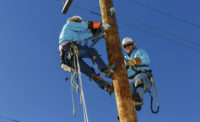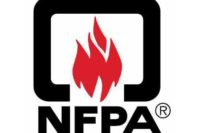Arc flash injuries

Understanding regulations and keeping safe in arc flash incidents is a must for workers in the electrical and utilities industries. Safety managers and employees must be aware of the potential causes of arc flash incidents as well as how to protect themselves should one occur.
The latest regulations
While NFPA 70E — the Standard for Electrical Safety in the Workplace — has been a longstanding regulation in the industry to protect workers, new updates from OSHA (effective August 2015) are also bringing the hazards of arc flash to light.
According to OSHA regulations, employers must:
- Assess the workplace to identify employees exposed to hazards from flames or from electric arcs.
- Make reasonable estimates of the incident heat energy of any electric-arc hazard to which an employee would be exposed.
- Ensure that employees exposed to hazards from flames or electric arcs do not wear clothing that could melt onto their skin or that could ignite and continue to burn when exposed to flames or the estimated heat energy.
- Ensure that the outer layer of clothing worn by an employee is flame resistant under certain conditions.
- With certain exceptions, ensure that employees exposed to hazards from electric arcs wear protective clothing and other protective equipment with an arc rating greater than or equal to the estimated heat energy.
- By implementing a regulation that requires employers to assess work environments and provide appropriate flame-resistant (FR) personal protective equipment (PPE), OHSA estimates that 20 fatalities and 118 serious injuries will be avoided annually.
Causes and results of arc flash incidents
Arc flash can be described as a “phenomenon where a flashover of electric current leaves its intended path and travels through the air from one conductor to another, or to ground.” Without proper protection, these incidents can cause serious harm or even death for nearby workers.
To stay prepared on the job, workers should be aware of common causes of an arc flash incident. This awareness can help drastically reduce the likelihood of an incident before it occurs. The common causes of arc flash incidents include dust, dropping tools, accidental touching, condensation, material failure, corrosion and faulty installation. By remaining alert on the job, workers can spot some of these potential arc flash hazards before they create a potential disaster.
In addition to understanding what can cause an arc flash incident, it is also important to educate employees on how severe the results of an incident can be. Arc flash incidents can vary in severity, resulting in fire and burns to nearby workers, flying objects such as molten metal, blast pressure or sound blasts and extreme heat.
Understanding these causes and signs is an essential step in being prepared.
How to protect workers on the job
Keeping safe on the job goes beyond knowing the causes and signs of an arc flash incident. The right personal protective equipment (PPE) is an essential tool for keeping workers safe from arc flash incidents. To select appropriate PPE, keep the following in mind:
- It is essential to have garments that properly fit each employee — regardless of body type or gender. Poorly fitted garments can actually add to hazards on the job.
- Garments should be made with lightweight, breathable material to avoid trapping in excess heat. Workers can lose focus if they are overheated.
- Uniform programs should be designed with year-round comfort in mind. FR-compliant layers should be provided for cooler months.
- Garments should feature non-meltable fibers. According to Section 130.7 (C) 9 of NFPA 70E, “meltable fibers such as acetate, nylon, polyester, polypropylene, and spandex shall not be permitted in fabric underlayers (underwear) next to the skin.”
Be aware, be prepared
Understanding regulations, as well as the causes and signs of an arc flash incident is a first and important step. In addition, it is essential to protect workers by assessing the safety of the jobsite and providing the necessary equipment to ensure safety.
Looking for a reprint of this article?
From high-res PDFs to custom plaques, order your copy today!






